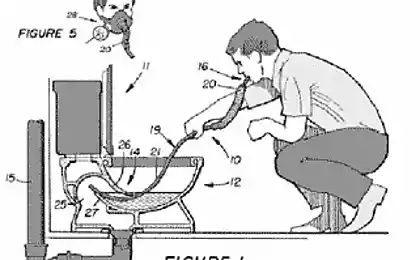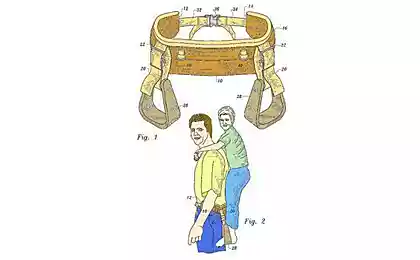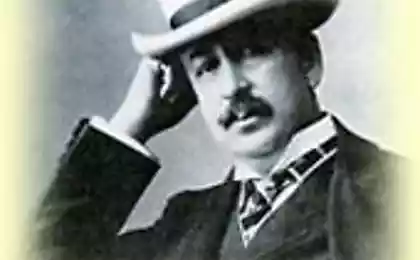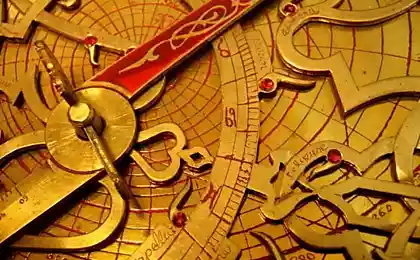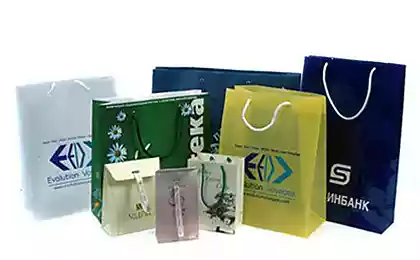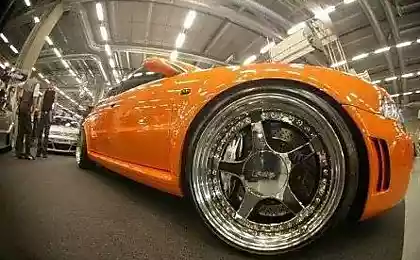571
Lowell wood: a journey from student to genius inventor of America
"In fact, this machine for one person," said Lowell wood immediately after he offered to give me a ride to the hotel. His Toyota 4Runner chocolate brown 1996 release parked outside the office building where he works in Bellevue, Washington. At the car shows that its mileage is more than 480 thousand kilometers. Garbage bags filled with God knows what, occupy a large part of the rear seat. He pulls his huge belly to fit behind the wheel, and with the help of a cane to shove the paper packages and vintage car phone 80-ies, trying to free up some space in the passenger seat. The aroma in the cabin is reminiscent of the smell of dog bowls. Wood inserts the key into the ignition lock and within a minute turn it back and forth until the car finally won't start. When we started, I asked, did all this rubbish that filled his crossover attitude to the hobby. "No, I don't have time for such things," replied Lowell. He added that he's not too good situation with the usual aspects of life such as paying bills or washing the car. He's too busy trying to resolve global issues. Constantly attack him new ideas — really big. "It's like a rainforest — every day it rains", he explained.

From the mouths of most other people remark like that would have sounded arrogant, if not delusional. But wood says the truth. In his 74 years he's been around for ten years occupied the position of resident inventor at Intellectual Ventures, a firm specializing in the patenting and development of technologies. He paid for what he thinks, and because he led the international teams involved in the development of products like shockproof helmets, systems, drug delivery, heavy-duty nuclear reactors, in short, anything that can satisfy any urgent need. In the 1980s he led the development of space lasers designed to protect the US from Soviet missiles in the framework of the program "Star wars." He is an astrophysicist, a paleontologist, a self-taught programmer and, as it became known a few months ago, the most prolific inventor in U.S. history.
His last patent Thomas Alva Edison received may 16, 1933. Patent US1908830 ("Holder that allows electroplating the object") is a device that joins two metals by electrolysis. This can hardly be called the most wonderful of his inventions. In the distant 1869 Edison patented inventions, made breakthroughs in communications, film, lighting, and power distribution. The end of his career he became an international celebrity, having your name 1084 patent — a record number for an American.
7 July 2015, this record was beaten: wood received a patent US9075906 "System of medical support, including medical equipment," which can Supplement a medical equipment device for video conferencing and data transfer, so that the patient could leave the hospital and use these devices at home. This 1085-y patent wood. It is also remarkable that more than 3,000 of his inventions waiting in the wings in the patent and trademark office. Probably many years, wood will remain a major American generator of ideas.
The work of wood at Intellectual Ventures included fanciful designs such as a laser shaver, and microwave, which can send energy to the individual products so that meat, vegetables and carbohydrate food result in heated equally. In addition, he was involved in development clothes dryers with a low level of energy consumption, automated car system against collisions and a large thermos to store vaccines. "At least half of its efforts may be more focused on helping the most unfortunate inhabitants of the planet. He is really good at. His ideas have saved thousands of lives, and he has all the chances to save even more," — said Nathan Mhyrvold, co-founder and CEO of Intellectual Ventures, former CTO of Microsoft.
Dropping me at the hotel, wood relief said that he knew a good mechanic. He plans to keep my 4Runner in the ranks long enough to bequeath her daughter, who receives a doctorate at the University of California at Berkeley. In addition, there is no need to think about the machine frees up time for inventions. The last time he was excited to work on a project to develop a one-time universal vaccine. "We need to do a couple of tricks, and we will be able to take the child, just born, to inject the vaccine, and that's all, no other children's vaccinations won't have to do".
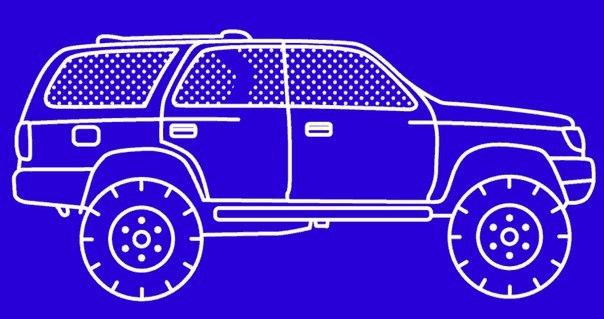
The inventor claims that if he were smarter, he'd have his way otherwise. Wood grew up in southern California and remembers the past: "I've never succeeded in learning." He would often pass my first examination in a subject or has received the lowest scores, which are then hardly increased after a thorough revision. This strategy worked. He skipped two grade, and enrolled in the University of California in Los Angeles at the age of 16, the result of the entrance test once in math class honors. The worst score for the first exam, once again, got it. "I was accepted into a class ability, not the knowledge that is to some extent destructive. It's like being thrown into a mountain stream, knowing only the theory of swimming," says Lowell.
The assessment brought the wood in horror, and he tried to catch up, solving complex tasks, which are allowed to earn extra points. "We had to figure out how to cover the area of the tiles within the given conditions. Was 1958, and it was well-known mathematical problem. Attempts to solve it seemed hopeless, and anyone who undertook the task soon gave it up," he recalls.
At this very moment UCLA only got a digital computer. Wood taught himself to use it during the Christmas holidays and wrote a program that could solve the notorious problem with the tiles. "It was just cynical: I used brute force to solve problems, which implies an intellectual approach. When I handed in my work, the Professor accused me of cheating, so I climbed into the briefcase and pulled out a floppy disk with the program. The Professor's jaw dropped in surprise, and he asked: "What is a computer? You will receive your score, if you teach me how to use this thing"," recalls wood.
He received his bachelor's degree in chemistry and mathematics, University of California at Los Angeles and a doctorate in astrophysics. Later, in 1972, he got a job at the National laboratory Lawrence Livemore, where he worked as a protégé of the physicist and "father" of the hydrogen bomb Edward teller. Wood was engaged in a large number of projects, from spacecraft and ending the use of gamma rays for applying a hidden watermark on items. Next was the "Star wars", officially known as the "Strategic defense initiative" for which he assembled a team of scientists to create a weapon system, capable to detect and destroy in flight Russian Intercontinental ballistic missiles.
What has been the Voodoo was an absolute surprise. Historians and journalists never really complained teller, one of the most controversial figures during the Cold war, at the same time constantly making it to the lunatics marginal science, especially when it comes to "Star wars." Despite billions of dollars and years of intense debate, the initiative never went beyond the laboratory walls.
Wood quickly notices that all this time he knew that although the system is technically feasible and was, in fact, turned out to be too complex and expensive. "For the most part it was a show-off kind of maneuver, undermining the morale and beating on the budget of the enemy," he says. And he adds: "I came into this project with eyes wide open and doing my job. And I achieved the result sought. The Soviet Union collapsed. Check. It's made of. The evil Empire no longer exists. My colleagues and I had a hand in this, and it was exactly what we wanted." For the inventor and his wife who also worked in the laboratory, the end of the Cold war was a big relief and has brought new opportunities. "When we finally witnessed the fall of the hammer and sickle on Christmas of 1991, I told my wife that we just got our lives back. What a wonderful gift for Christmas."
In 2006, after working 40 years for the government, wood has retired to become an inventor full-time. He met Myrvold many years ago during an interview for the scientific community. They renewed their friendship during the conference about dinosaurs — Myrvold also enjoys paleontology, where he persuaded wood to join Intellectual Ventures. Myrvold later introduced wood to bill gates. The man found a common language and we now meet regularly for "brainstorming". "Lowell is a Prime example of the concept of "man with encyclopedic knowledge." It's not about how much he knows and how his brain works. He gives himself the freedom to look at the problem from a completely different side. For me it is a sign of a great inventor," — says gates.
Wood took on the role of the person on demand a decisive and complex issues, associated with many humanitarian problems gates. "Whenever I'm faced with a scientific question that I would like better to understand, the Lowell is the first man to whom I appeal," says gates. "If he does not know the answer, which is rare, I am sure that he is able to find him."

The other morning at Intellectual Ventures, wood sat back, looking strikingly authentic, the head of a Tyrannosaurus Rex, which hangs in reception, as well as the collection of Antiques — typewriters, microscopes and calculating machine 1890 — located across the hall for conferences. He was dressed as usual in slacks and a handmade shirt with short sleeves. He has a collection of shirts made by the Caliph, a street artist from Berkeley. The artist retired, and wood wears his shirts over the years. "That's why they're so dark," he grins. Boiled bright t-shirt together with a reddish-gray beard makes him look like a hippie Santa.
Conversation with him is equivalent to watching several seasons of a TV series Nova. For four hours he says with a soft, deep voice, seamlessly moving from topic to topic: physics, space lasers, bubonic plague, rocket, whale oil, lithography, hydraulic fracturing, eidetic memory, war. And he has a lot of experience about — and you knew that person was infected with syphilis from grazing animals 1500 years ago? — the fact that somehow relates to the topic of discussion.
Wood ascribes to reading its ability to jump from topic to topic, picking up of the Association, which sometimes leads to discoveries. He signed for three dozen academic journals. "I feel the lack of willpower as soon as you open the electronic content, or Physical Review Letters New England Journal of Medicine. Me almost impossible to draw from these publications. I have read three articles before you will be able to break away. If you do not read them, then I'm doomed. I'm never going back to them because then there will be logs, followed by others," he admits.
This habit was formed around 50 years ago. "As a student, I attended a lecture by Linus Pauling — says-wood — after the lecture, when everyone was gone, I asked him: "How do you keep in mind many great ideas?" He said: "there is nothing complicated. You just read and remember what they read"".
Wood is never a list, even if sent to the store. If he forgets to buy something, then says, "it's embarrassing!". He also refers to his mistakes at work. "If you made a mistake, then you need to promise yourself not only not to repeat it in the future, but not to commit more such mistakes, says wood. — This approach is very important for someone who wants to achieve success in your work." published
P. S. And remember, only by changing their consumption — together we change the world! ©
Join us in Facebook , Vkontakte, Odnoklassniki
Source: vk.com/public80512191?w=page-80512191_49842690

From the mouths of most other people remark like that would have sounded arrogant, if not delusional. But wood says the truth. In his 74 years he's been around for ten years occupied the position of resident inventor at Intellectual Ventures, a firm specializing in the patenting and development of technologies. He paid for what he thinks, and because he led the international teams involved in the development of products like shockproof helmets, systems, drug delivery, heavy-duty nuclear reactors, in short, anything that can satisfy any urgent need. In the 1980s he led the development of space lasers designed to protect the US from Soviet missiles in the framework of the program "Star wars." He is an astrophysicist, a paleontologist, a self-taught programmer and, as it became known a few months ago, the most prolific inventor in U.S. history.
His last patent Thomas Alva Edison received may 16, 1933. Patent US1908830 ("Holder that allows electroplating the object") is a device that joins two metals by electrolysis. This can hardly be called the most wonderful of his inventions. In the distant 1869 Edison patented inventions, made breakthroughs in communications, film, lighting, and power distribution. The end of his career he became an international celebrity, having your name 1084 patent — a record number for an American.
7 July 2015, this record was beaten: wood received a patent US9075906 "System of medical support, including medical equipment," which can Supplement a medical equipment device for video conferencing and data transfer, so that the patient could leave the hospital and use these devices at home. This 1085-y patent wood. It is also remarkable that more than 3,000 of his inventions waiting in the wings in the patent and trademark office. Probably many years, wood will remain a major American generator of ideas.
The work of wood at Intellectual Ventures included fanciful designs such as a laser shaver, and microwave, which can send energy to the individual products so that meat, vegetables and carbohydrate food result in heated equally. In addition, he was involved in development clothes dryers with a low level of energy consumption, automated car system against collisions and a large thermos to store vaccines. "At least half of its efforts may be more focused on helping the most unfortunate inhabitants of the planet. He is really good at. His ideas have saved thousands of lives, and he has all the chances to save even more," — said Nathan Mhyrvold, co-founder and CEO of Intellectual Ventures, former CTO of Microsoft.
Dropping me at the hotel, wood relief said that he knew a good mechanic. He plans to keep my 4Runner in the ranks long enough to bequeath her daughter, who receives a doctorate at the University of California at Berkeley. In addition, there is no need to think about the machine frees up time for inventions. The last time he was excited to work on a project to develop a one-time universal vaccine. "We need to do a couple of tricks, and we will be able to take the child, just born, to inject the vaccine, and that's all, no other children's vaccinations won't have to do".

The inventor claims that if he were smarter, he'd have his way otherwise. Wood grew up in southern California and remembers the past: "I've never succeeded in learning." He would often pass my first examination in a subject or has received the lowest scores, which are then hardly increased after a thorough revision. This strategy worked. He skipped two grade, and enrolled in the University of California in Los Angeles at the age of 16, the result of the entrance test once in math class honors. The worst score for the first exam, once again, got it. "I was accepted into a class ability, not the knowledge that is to some extent destructive. It's like being thrown into a mountain stream, knowing only the theory of swimming," says Lowell.
The assessment brought the wood in horror, and he tried to catch up, solving complex tasks, which are allowed to earn extra points. "We had to figure out how to cover the area of the tiles within the given conditions. Was 1958, and it was well-known mathematical problem. Attempts to solve it seemed hopeless, and anyone who undertook the task soon gave it up," he recalls.
At this very moment UCLA only got a digital computer. Wood taught himself to use it during the Christmas holidays and wrote a program that could solve the notorious problem with the tiles. "It was just cynical: I used brute force to solve problems, which implies an intellectual approach. When I handed in my work, the Professor accused me of cheating, so I climbed into the briefcase and pulled out a floppy disk with the program. The Professor's jaw dropped in surprise, and he asked: "What is a computer? You will receive your score, if you teach me how to use this thing"," recalls wood.
He received his bachelor's degree in chemistry and mathematics, University of California at Los Angeles and a doctorate in astrophysics. Later, in 1972, he got a job at the National laboratory Lawrence Livemore, where he worked as a protégé of the physicist and "father" of the hydrogen bomb Edward teller. Wood was engaged in a large number of projects, from spacecraft and ending the use of gamma rays for applying a hidden watermark on items. Next was the "Star wars", officially known as the "Strategic defense initiative" for which he assembled a team of scientists to create a weapon system, capable to detect and destroy in flight Russian Intercontinental ballistic missiles.
What has been the Voodoo was an absolute surprise. Historians and journalists never really complained teller, one of the most controversial figures during the Cold war, at the same time constantly making it to the lunatics marginal science, especially when it comes to "Star wars." Despite billions of dollars and years of intense debate, the initiative never went beyond the laboratory walls.
Wood quickly notices that all this time he knew that although the system is technically feasible and was, in fact, turned out to be too complex and expensive. "For the most part it was a show-off kind of maneuver, undermining the morale and beating on the budget of the enemy," he says. And he adds: "I came into this project with eyes wide open and doing my job. And I achieved the result sought. The Soviet Union collapsed. Check. It's made of. The evil Empire no longer exists. My colleagues and I had a hand in this, and it was exactly what we wanted." For the inventor and his wife who also worked in the laboratory, the end of the Cold war was a big relief and has brought new opportunities. "When we finally witnessed the fall of the hammer and sickle on Christmas of 1991, I told my wife that we just got our lives back. What a wonderful gift for Christmas."
In 2006, after working 40 years for the government, wood has retired to become an inventor full-time. He met Myrvold many years ago during an interview for the scientific community. They renewed their friendship during the conference about dinosaurs — Myrvold also enjoys paleontology, where he persuaded wood to join Intellectual Ventures. Myrvold later introduced wood to bill gates. The man found a common language and we now meet regularly for "brainstorming". "Lowell is a Prime example of the concept of "man with encyclopedic knowledge." It's not about how much he knows and how his brain works. He gives himself the freedom to look at the problem from a completely different side. For me it is a sign of a great inventor," — says gates.
Wood took on the role of the person on demand a decisive and complex issues, associated with many humanitarian problems gates. "Whenever I'm faced with a scientific question that I would like better to understand, the Lowell is the first man to whom I appeal," says gates. "If he does not know the answer, which is rare, I am sure that he is able to find him."

The other morning at Intellectual Ventures, wood sat back, looking strikingly authentic, the head of a Tyrannosaurus Rex, which hangs in reception, as well as the collection of Antiques — typewriters, microscopes and calculating machine 1890 — located across the hall for conferences. He was dressed as usual in slacks and a handmade shirt with short sleeves. He has a collection of shirts made by the Caliph, a street artist from Berkeley. The artist retired, and wood wears his shirts over the years. "That's why they're so dark," he grins. Boiled bright t-shirt together with a reddish-gray beard makes him look like a hippie Santa.
Conversation with him is equivalent to watching several seasons of a TV series Nova. For four hours he says with a soft, deep voice, seamlessly moving from topic to topic: physics, space lasers, bubonic plague, rocket, whale oil, lithography, hydraulic fracturing, eidetic memory, war. And he has a lot of experience about — and you knew that person was infected with syphilis from grazing animals 1500 years ago? — the fact that somehow relates to the topic of discussion.
Wood ascribes to reading its ability to jump from topic to topic, picking up of the Association, which sometimes leads to discoveries. He signed for three dozen academic journals. "I feel the lack of willpower as soon as you open the electronic content, or Physical Review Letters New England Journal of Medicine. Me almost impossible to draw from these publications. I have read three articles before you will be able to break away. If you do not read them, then I'm doomed. I'm never going back to them because then there will be logs, followed by others," he admits.
This habit was formed around 50 years ago. "As a student, I attended a lecture by Linus Pauling — says-wood — after the lecture, when everyone was gone, I asked him: "How do you keep in mind many great ideas?" He said: "there is nothing complicated. You just read and remember what they read"".
Wood is never a list, even if sent to the store. If he forgets to buy something, then says, "it's embarrassing!". He also refers to his mistakes at work. "If you made a mistake, then you need to promise yourself not only not to repeat it in the future, but not to commit more such mistakes, says wood. — This approach is very important for someone who wants to achieve success in your work." published
P. S. And remember, only by changing their consumption — together we change the world! ©
Join us in Facebook , Vkontakte, Odnoklassniki
Source: vk.com/public80512191?w=page-80512191_49842690
